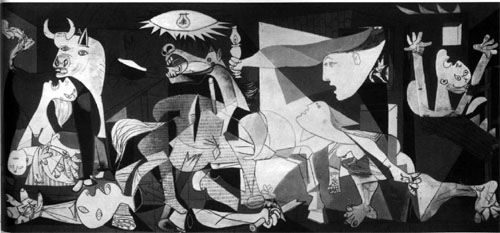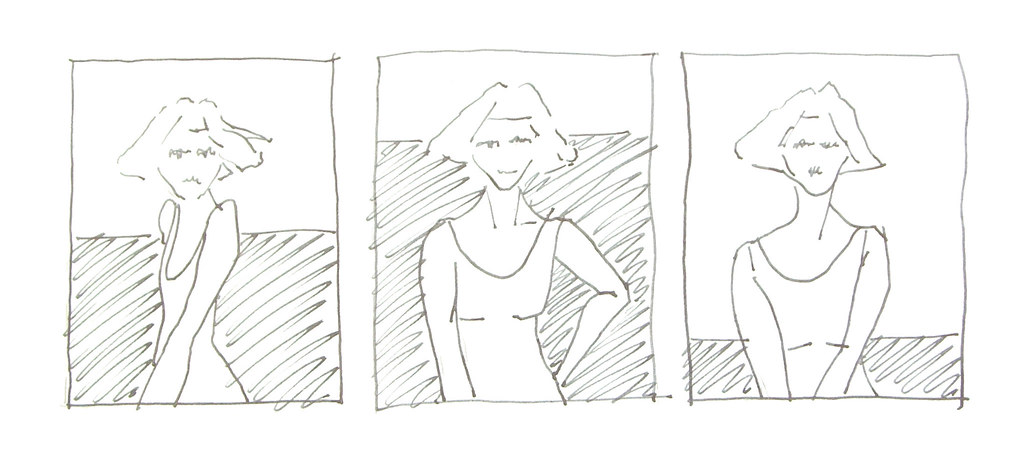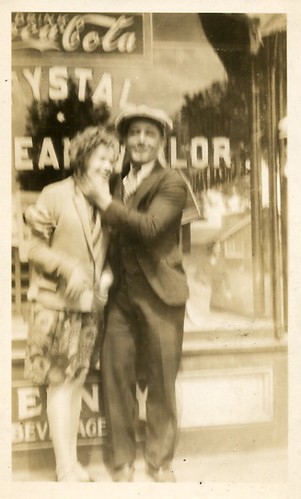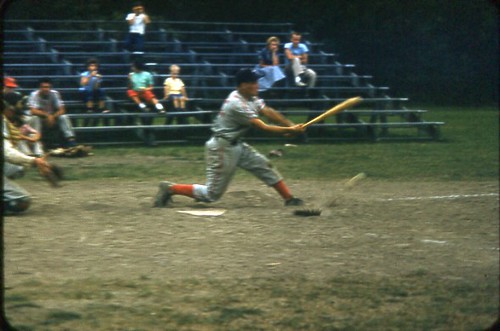FrankS
Registered User
the point is, an image is eye-catching for a reason.
Al Kaplan
Mentor
Franz von Bayros was a master of erotica in the late nineteenth and early twentieth century. He wasn't a photographer but the compositions of his black and white drawings were fantastic. A quick Google search wil turn up lots of pictures by him.
Much of von Bayros work has the composition based on the "rule" of halves. Thirds appear nowhere in most of the work.
Much of von Bayros work has the composition based on the "rule" of halves. Thirds appear nowhere in most of the work.
Last edited:
D.O'K.
Darren O'Keeffe.
Thanks for this Stewart--very stimulating.
Regards,
D.
Regards,
D.
Last edited:
Sparrow
Mentor
Franz von Bayros was a master of erotica in the late nineteenth and early twentieth century. He wasn't a photographer but the compositions of his black and white drawings were fantastic. A quick Google search wil turn up lots of pictures by him.
Much of von Bayros work has the composition based on the "rule" of halves. Thirds appear nowhere in most of the work.
You clearly know your pornography sir
Last edited:
Paulbe
Well-known
Stewart--please keep the posts coming.
I am really enjoying this--very helpful.
Thank you!
Paul
I am really enjoying this--very helpful.
Thank you!
Paul
Al Kaplan
Mentor
Sparrow, I wasn't presenting von Bayros because his work was pornographic but because it was a great example of composition by halves. The style of his work was common in that era, the stark black and white, the stylized compositions, but his was unique because of the use of the half rather that the third. The discussion here was glorifying the rule of thirds and I was merely trying to suggest that there were equally good alternatives. If anybody here can suggest the work of another photographer or artist that worked in halves, or something else, then please suggest it.
Back around 1959 or 1960 I had an artist friend who introduced me to that stark black and white style of composition thinking that as a young photographer who preferred working in black and white I might learn something about working with dark and light masses in a composition. It was a whole school of art that had developed back in that era. Yes, it influenced my photography, and for the better I think.
I'll even give credit here to that young artist who introduced me to this genre, a brilliant beyond his years 14 year old when I first met him, and a fantastic artist as well. He went on to work at The Factory with Andy Warhol, starred in a number of Andy's films, and then became a respected poet and art critic. His name is Rene Ricard in case you want to Google it.
I think that as photographers we shouldn't restrict ourselves to just studying the work of other photographers. Expand your horizons!
Back around 1959 or 1960 I had an artist friend who introduced me to that stark black and white style of composition thinking that as a young photographer who preferred working in black and white I might learn something about working with dark and light masses in a composition. It was a whole school of art that had developed back in that era. Yes, it influenced my photography, and for the better I think.
I'll even give credit here to that young artist who introduced me to this genre, a brilliant beyond his years 14 year old when I first met him, and a fantastic artist as well. He went on to work at The Factory with Andy Warhol, starred in a number of Andy's films, and then became a respected poet and art critic. His name is Rene Ricard in case you want to Google it.
I think that as photographers we shouldn't restrict ourselves to just studying the work of other photographers. Expand your horizons!
Last edited:
Sparrow
Mentor
sorry Al, I was being facetious with the porn reference. I’m definitely not being prescriptive here, I did try to make that clear in the first few lines of the first post.
reiki_
Well-known
I don't know , I think composition is much like civilization (maybe I should use socialization instead) , just on a smaller scale.
If you live by the rules of society and know them well , especially if you know how to bend them just the right amount , you'll be miles apart from ordinary folks. Without social training you're just one of those feral children they find every once in a while.
If you live by the rules of society and know them well , especially if you know how to bend them just the right amount , you'll be miles apart from ordinary folks. Without social training you're just one of those feral children they find every once in a while.
Sparrow
Mentor
I don't know , I think composition is much like civilization (maybe I should use socialization instead) , just on a smaller scale.
If you live by the rules of society and know them well , especially if you know how to bend them just the right amount , you'll be miles apart from ordinary folks. Without social training you're just one of those feral children they find every once in a while.
I think that is a very profound and apt metaphor
Sparrow
Mentor
Towards the end of the Great War this is about as good as it got, it would have been accepted as "reality" by the audience at the time.

At the same stage in the Second War the whole world had the mental tool box to see and understand an image like this, us plebs could see past it's shortcomings to a deeper reality, a bit like a language that had suddenly developed a grammar to go with all the words.

The former looks stilted, posed and old fashioned, the latter would be accepted and fully understood today as a man in immediate contact with an enemy, it could have been taken yesterday.

At the same stage in the Second War the whole world had the mental tool box to see and understand an image like this, us plebs could see past it's shortcomings to a deeper reality, a bit like a language that had suddenly developed a grammar to go with all the words.

The former looks stilted, posed and old fashioned, the latter would be accepted and fully understood today as a man in immediate contact with an enemy, it could have been taken yesterday.
Sparrow
Mentor
So while photography was becoming more and more accessible the same can't be said for the traditional graphic arts, sorry but I'm having a go at a couple more sacred-cows now.
While the PJs were risking their necks to send images back from the Spanish war, Gerda Taro paid with her twenty some year old life, the best that high-art had to offer was, by the consensus of those that know, Guernica. Now without wishing to be unkind to comrade P. Guernica isn't the easiest picture to appreciate and hasn't got a particularly strong narrative, and one would have thought he could have gone to the trouble of doing something new instead of altering one he'd made earlier, but never mind eh.
Contrast Guernica with Capa's d-day shots, not only are Capa's more easily understood they are also surprisingly more abstracted.

While Picasso agonising about collaboration and having sex with his young models in the south of France, Capa was going forward with a section fire party outside Cordoba. The contrast couldn't have been greater, these new Photojournalists lived in a world that had lead in the air and its' people had blood on their hands and the public would pay to see it.
While the PJs were risking their necks to send images back from the Spanish war, Gerda Taro paid with her twenty some year old life, the best that high-art had to offer was, by the consensus of those that know, Guernica. Now without wishing to be unkind to comrade P. Guernica isn't the easiest picture to appreciate and hasn't got a particularly strong narrative, and one would have thought he could have gone to the trouble of doing something new instead of altering one he'd made earlier, but never mind eh.
Contrast Guernica with Capa's d-day shots, not only are Capa's more easily understood they are also surprisingly more abstracted.

While Picasso agonising about collaboration and having sex with his young models in the south of France, Capa was going forward with a section fire party outside Cordoba. The contrast couldn't have been greater, these new Photojournalists lived in a world that had lead in the air and its' people had blood on their hands and the public would pay to see it.
Last edited:
Sparrow
Mentor
Again highly opinionated but the path of vernacular art to me ran on through Turner and Monet then took a left at Picasso Chagall and Malevich becoming steadily more irrelevant is it went, it’s now living in Islington, paying for sex with its sister and producing ever more imbecile offspring.
Vernacular art was on the other hand, reignited by Capa, Cartier-Bresson and Co in the golden years around World War 2 and it was that new set of visual conventions that dragged Bacon back to proper work, inspired the likes of Hockney, Gormley and Banksy
Vernacular art was on the other hand, reignited by Capa, Cartier-Bresson and Co in the golden years around World War 2 and it was that new set of visual conventions that dragged Bacon back to proper work, inspired the likes of Hockney, Gormley and Banksy
Sparrow
Mentor
I forgot this bit about horizons.
I'm probably stating the obvious, and Roger probably covers it in AP every 6 months, but I see so few people doing it I thought it was worth mentioning. If you have a subject in the foreground and take your shot with the camera at the same height, the horizon ends up bang in the middle, like I said obviously, (the first drawing). If one stands on an upturned bucket, or sits on it, the horizon moves up or down in relation to the subject, like I said obvious but useful sometimes

If da Vinci had a m9 with a Noctilux he'd have set it to f22 gone up a step ladder, well after he'd run off screaming "my soul, my soul is trapped in this devils box". if you look at probably the most cliched image ever the Mona Lisa and consider the height of the horizon you realise he played with the perspective for some reason.
as an aside, I once bumped into David Hockney in the early 80's, he asked me where they (the college authorities) had moved the toilets to … I was so proud
PS sorry about the pic, I seem to have lost the ability to draw … computers have a lot to answer for
I'm probably stating the obvious, and Roger probably covers it in AP every 6 months, but I see so few people doing it I thought it was worth mentioning. If you have a subject in the foreground and take your shot with the camera at the same height, the horizon ends up bang in the middle, like I said obviously, (the first drawing). If one stands on an upturned bucket, or sits on it, the horizon moves up or down in relation to the subject, like I said obvious but useful sometimes

If da Vinci had a m9 with a Noctilux he'd have set it to f22 gone up a step ladder, well after he'd run off screaming "my soul, my soul is trapped in this devils box". if you look at probably the most cliched image ever the Mona Lisa and consider the height of the horizon you realise he played with the perspective for some reason.
as an aside, I once bumped into David Hockney in the early 80's, he asked me where they (the college authorities) had moved the toilets to … I was so proud
PS sorry about the pic, I seem to have lost the ability to draw … computers have a lot to answer for
Sparrow
Mentor
part 4, is it) The Golden years; or why we know what we like even if we know about art
If one looks at photography's growth from the start of the Spanish war to the end of the Korean some 20ish years later just consider the huge amount of money the public had spent on the likes of Picture Post, Paris Match, Life, Sports illustrated and that German one with the snappy title. Then there were the newspapers that built their reputations on pictorial content, by the end of the war every nation on Earth must have had a New York times or a Daily Mirror, or the smouldering remains of one anyway, despite the letterpress process being little better than a woodcut for reproducing a photo the public demand was still enormous.
It was a disparate group of people that fed its growth with images and it was those all pervasive images that set in stone the publics view of what a "good picture" is; and left Picasso et el largely irrelevant, if interesting, minority pursuit. They were not in any way photojournalists at this stage, they were shooting current events and they were telling a story but they were absolutely not impartial, even the bourgeois Cartier-Bresson dressed to the left and Capa was almost an exile because of his radicalism. When Adolph put together the longest chorus-line in history and started touring Europe they provided the public with some pretty critical reviews.
I think I'm correct in saying that, in this country, along with potatoes newspapers were never rationed during the Second War, being as important to the war effort as the absence of hunger, these guys were doing propaganda of the highest order ...
If one looks at photography's growth from the start of the Spanish war to the end of the Korean some 20ish years later just consider the huge amount of money the public had spent on the likes of Picture Post, Paris Match, Life, Sports illustrated and that German one with the snappy title. Then there were the newspapers that built their reputations on pictorial content, by the end of the war every nation on Earth must have had a New York times or a Daily Mirror, or the smouldering remains of one anyway, despite the letterpress process being little better than a woodcut for reproducing a photo the public demand was still enormous.
It was a disparate group of people that fed its growth with images and it was those all pervasive images that set in stone the publics view of what a "good picture" is; and left Picasso et el largely irrelevant, if interesting, minority pursuit. They were not in any way photojournalists at this stage, they were shooting current events and they were telling a story but they were absolutely not impartial, even the bourgeois Cartier-Bresson dressed to the left and Capa was almost an exile because of his radicalism. When Adolph put together the longest chorus-line in history and started touring Europe they provided the public with some pretty critical reviews.
I think I'm correct in saying that, in this country, along with potatoes newspapers were never rationed during the Second War, being as important to the war effort as the absence of hunger, these guys were doing propaganda of the highest order ...
Last edited:
Al Kaplan
Mentor
Now television does the propaganda. Even Time and Newsweek became orphaned. Unfortunately Fox News now spews the propaganda to the broader audience via the tube while its counterbalance, Alternet, gets hidden in a corner of the internet. Photography got lost in the shuffle.
Chris101
summicronia
... While Picasso agonising about collaboration and having sex with his young models in the south of France, Capa was going forward with a section fire party outside Cordoba. The contrast couldn't have been greater, these new Photojournalists lived in a world that had lead in the air and its' people had blood on their hands and the public would pay to see it.
From what I have read, Capa had a bit of sex during that time as well.
Sparrow
Mentor
From what I have read, Capa had a bit of sex during that time as well.
I would imagine “we may be killed tomorrow” was a hell of a chat-up line
Sparrow
Mentor
Looking back we see a homogenous group with a common purpose, at the time this lot were far from the founding fathers revered here today, they were in fact a bunch of displaced Jews, political radicals and writers, with the odd English eccentric and bourgeois Frenchman who had proved a big disappointment to his dad. Alike only in so far as form follows function, and war is a young mans sport, Cartier-Bresson being a little older had the greater respect for rifle fire so tended to spend more time in the rear, and a justifiable distaste for National Socialism.
They were in a world where their skills were in demand, the press threw money at them, they were famous, they got to sleep with beautiful women, and go drinking with Hemingway; one can see why there were one or two egos floating about. Imagine that lot trying to get a US visa today, that story RichC posted somewhere about Cartier-Bressonis, Hemingway and the Brownie is so funny because it's so close to the truth. The thing is, these chaps were in competition with each other, Magnum was years in the future, mid 40's? they only started co-operating when the going got tougher.
They would have been looking with huge interest at each others' work, at what was getting the front pages, the papers would have been comparing circulation like excited public-schoolboys, a hothouse in which this bunch of left wing radicals and writers were striving to improve their skills and seeking the best kit and processing. As far as I know non had any artistic training apart from Cartier-Bresson and there was little history of off tripod photography to draw on ...
They were in a world where their skills were in demand, the press threw money at them, they were famous, they got to sleep with beautiful women, and go drinking with Hemingway; one can see why there were one or two egos floating about. Imagine that lot trying to get a US visa today, that story RichC posted somewhere about Cartier-Bressonis, Hemingway and the Brownie is so funny because it's so close to the truth. The thing is, these chaps were in competition with each other, Magnum was years in the future, mid 40's? they only started co-operating when the going got tougher.
They would have been looking with huge interest at each others' work, at what was getting the front pages, the papers would have been comparing circulation like excited public-schoolboys, a hothouse in which this bunch of left wing radicals and writers were striving to improve their skills and seeking the best kit and processing. As far as I know non had any artistic training apart from Cartier-Bresson and there was little history of off tripod photography to draw on ...
Last edited:
antiquark
Derek Ross
If you have a subject in the foreground and take your shot with the camera at the same height, the horizon ends up bang in the middle,
Sorry to be a stickler... if you take a picture from eye level, and your subject is the same height as you, the horizon line will pass through their eyes.
Actually, the horizon indicates where the camera is situated. That's how you can tell if someone took a hip-shot, the horizon will be around the subject's midsection.
Sparrow
Mentor
Many of this original group were writers so the idea of narrative would be second nature to them, I suppose each would bring a different set of skills to this new media. It would be the mixture of those skills that created the genera, in turn it was that genera that provided the public with the graphic element of its news information until TV and video took over in the 60's and it remains as the public’s graphic vernacular to this day.
Now don't get me wrong here I'm not that keen on Cartier-Bresson, I've seen his negs, technically challenged springs to mind, as do pompous, bourgeois and elitist, however while Capa was one of many that brought a reckless bravery, swarthy good looks and improbably thick hair to the table, Cartier-Bresson seems to be, uniquely, the one with the artistic skills. Cartier-Bresson's personal tastes lay in surrealism and cubism so were useless in such a graphic medium, as Man Ray proved, but the clasical stuff Cartier-Bresson had learned from his uncle (I think) would have given him a head start on the others. He would have perhaps advised his friends and been copied by his competitors, it was a mix of mainly classical composition and proportion, with an alertness to the Gestalt philosophy, and occasionally an eye for the surreal that informed the aesthetic.
The equipment also brought something new to the party faster films got the cameras off tripods and introduced background, and movement blur and the new generation of superfast f1.5 lenses brought flare and recession through shallow DOF all of which would have been seen as faults in 1930, became just another tool to tell the story with by 1950 and sadly spawned the bokeh cliché by 2005. Cinematographers still cling to film to retain "that look" that Joe public understands and CGI has programs to mimic these one-time faults because they have become so much a part of our understanding.


Now don't get me wrong here I'm not that keen on Cartier-Bresson, I've seen his negs, technically challenged springs to mind, as do pompous, bourgeois and elitist, however while Capa was one of many that brought a reckless bravery, swarthy good looks and improbably thick hair to the table, Cartier-Bresson seems to be, uniquely, the one with the artistic skills. Cartier-Bresson's personal tastes lay in surrealism and cubism so were useless in such a graphic medium, as Man Ray proved, but the clasical stuff Cartier-Bresson had learned from his uncle (I think) would have given him a head start on the others. He would have perhaps advised his friends and been copied by his competitors, it was a mix of mainly classical composition and proportion, with an alertness to the Gestalt philosophy, and occasionally an eye for the surreal that informed the aesthetic.
The equipment also brought something new to the party faster films got the cameras off tripods and introduced background, and movement blur and the new generation of superfast f1.5 lenses brought flare and recession through shallow DOF all of which would have been seen as faults in 1930, became just another tool to tell the story with by 1950 and sadly spawned the bokeh cliché by 2005. Cinematographers still cling to film to retain "that look" that Joe public understands and CGI has programs to mimic these one-time faults because they have become so much a part of our understanding.


Share:
-
This site uses cookies to help personalise content, tailor your experience and to keep you logged in if you register.
By continuing to use this site, you are consenting to our use of cookies.

